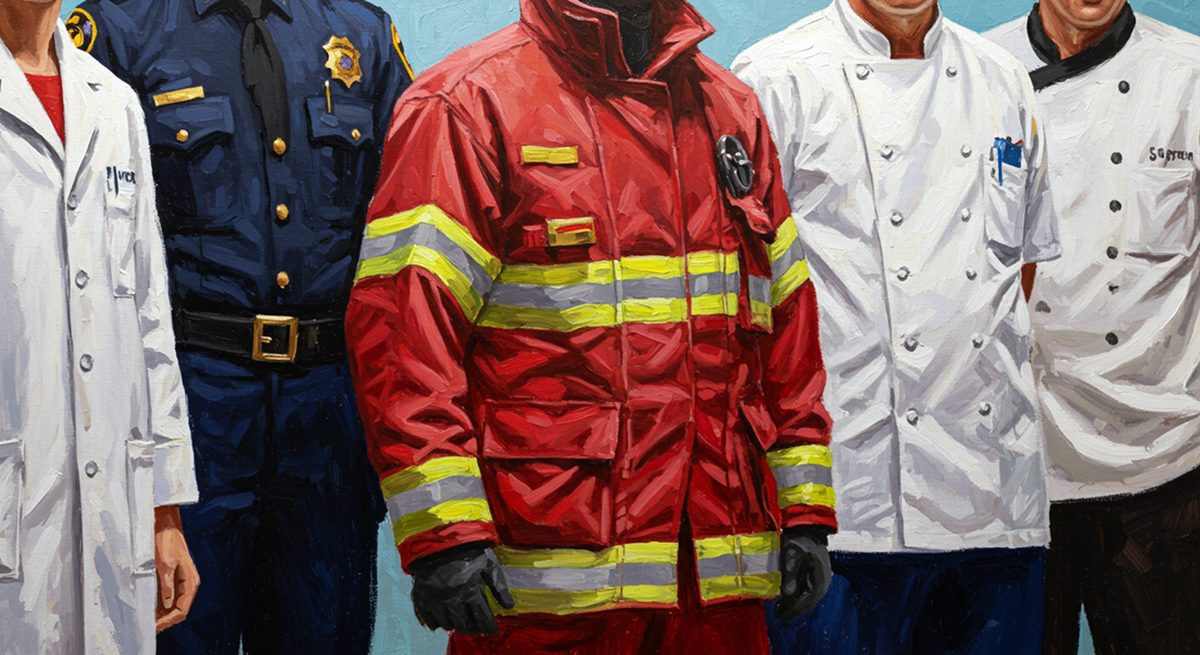There are many businesses that require staff to wear uniforms to work.
Uniforms can vary greatly as some can be quite casual (“shirt-and-pants”), while others are highly specific and structured elements. Employee uniforms in a business can have a lot of value. Uniforms have the power to create a sense of ownership within the business. It separates staff from customers and unifies staff both in terms of branding and image expectations. Dress codes, which are not the same as uniforms, also tend to leave a lot up to interpretation which can result in unwanted apparel on the shopfloor.
That being said, uniforms have a legal definition that is important to understand, so that employers can guide each employee through the nuances of uniform laws.

What Is a Uniform?
Uniforms are legally defined as specific clothes that should be worn by workers in a workplace. Businesses that expect workers to wear uniforms need to reimburse staff for the costs associated with purchasing workwear. With a dress code, there is no need to reimburse, and it allows employers to be a little more flexible with what their staff members are wearing. However, employers should be careful how prescriptive they are about dress codes for their workforce; there is a line where a code can become a uniform and will require reimbursement.

Uniform Vs. Dress Code
With specific industries, there can be a well-established and recognized uniform program that is often a requirement for public safety or employee protection. The specific workwear associated with a certain industry or profession is a matter of importance for the services provided by a business and also allows for people to be easily identified by what they are wearing. Individual branding is allowed, but the general look of the workwear is universally identifiable.

For example:
- Hospital workers are often required to wear scrubs in a specific color.
- Restaurants need to invest in non-skid shoes.
- Construction workers need work boots that meet specific safety standards.
These standards tend to be universal and are not associated only with specific offices but rather with industry standards. In the medical profession, the color of the scrubs may vary from one institution to another, but the fact that scrubs are required will not change. There might be other items that are specific to company uniforms and therefore require companies to reimburse employees for their cost. This may include:
- Clothes that sport the company logo or other specifics associated with the company.
- A specific shirt that an employee should be wearing daily.
- Sometimes employees need to sport work clothes that have been sold by the company, and these clothes often need to be updated seasonally.

Why Defining Work Uniforms Matters
Where the standard of dress is extremely sticks and employers expect these high standards to be met, specific work apparel is necessary. However, there are many businesses that do not want to reimburse employees for their work clothes, so they attempt to get around it. There are some major lawsuits currently brewing with some clothing companies that require their employees to wear clothing from the store. There are some cases where requirements can be extreme. Employees might need to maintain specific standards even in terms of hairstyle and brand image standards that change with the season. Punishments can also be strict for failure to meet these standards of workwear and have thus led to numerous lawsuits against some companies where the professional image was taken a step too far.
It is, therefore, essential that organizations understand the intricacies of the differences between work uniforms and dress codes. It is important that employees are not forced to wear specific items that are not common to their profession – especially when these forced purchases that are not reimbursed by the business. It is beneficial for employees to have a strong understanding of the law.

Characteristics of Quality Uniforms
When a company decides on a uniform program, they need to bare in mind what the purpose of this uniform is and what role it plays within the brand of their business.
The characteristics of a good uniform are dependent on its purpose within a specific business and the industry standard that is in place.
- Uniforms offer protection from contamination in certain industries, like the medical field or the food industry.
- Safety can also be a characteristic to consider in construction industries. Workwear might require special equipment that can form part of a uniform.
- Workplace pride and making sure that a uniform makes an employee stand out from customers can be great for team spirit.
- This can be achieved through a logo associated with your brand, or specialized workwear associated with your services or the job types that employees do.
- Lastly, a uniform usually needs to be uniform across all employees in a specific job type. They create uniformity.











